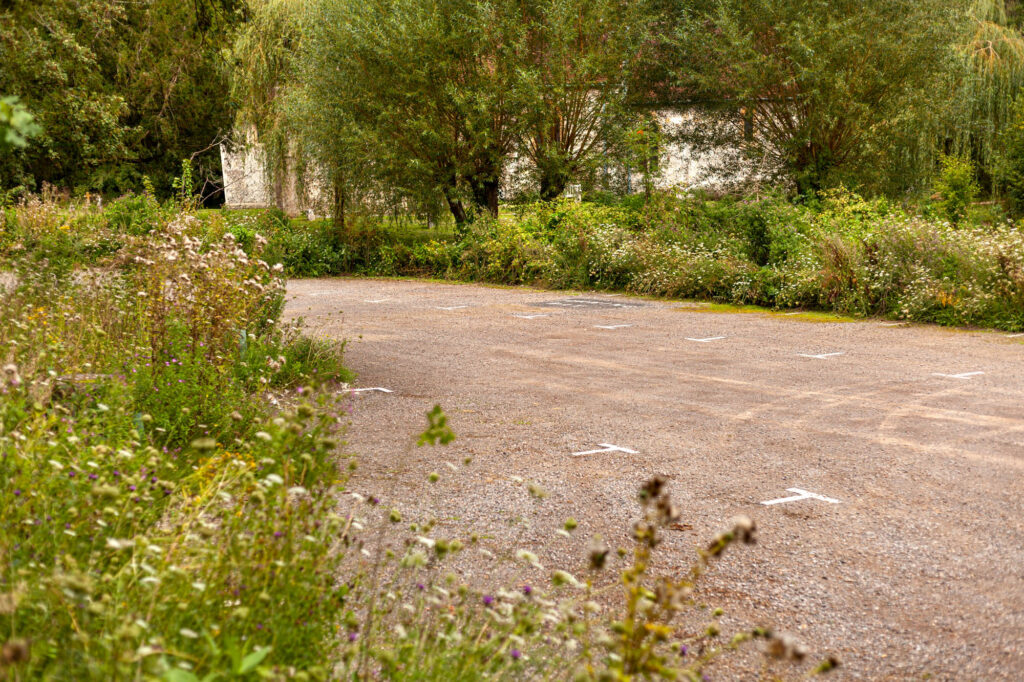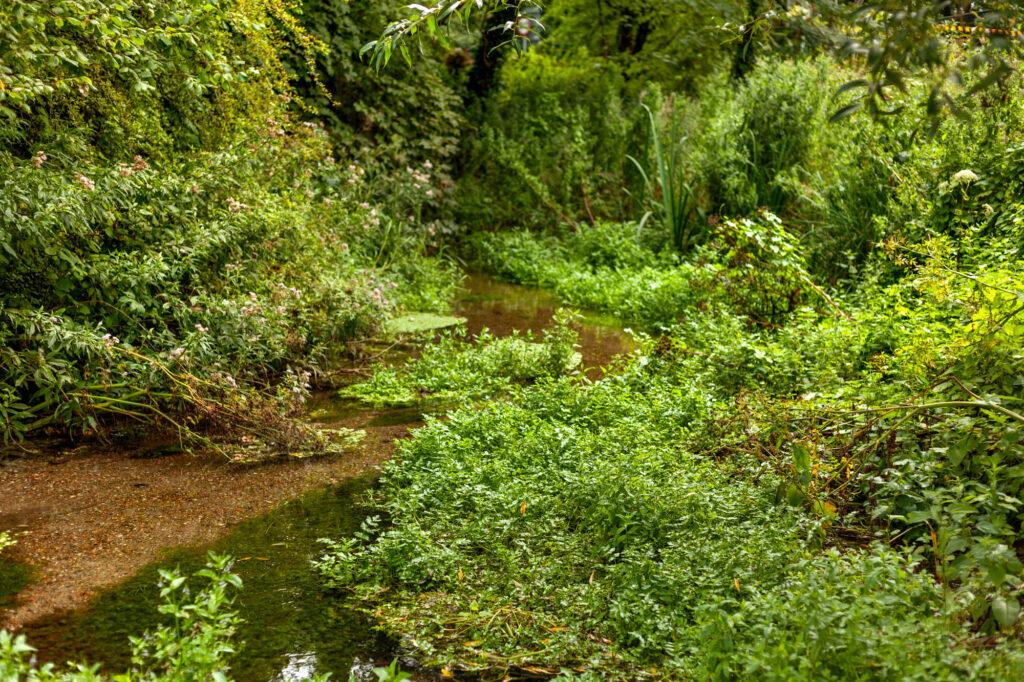This project was carried out on behalf of the Church of St. Swithuns, Headbourne Worthy, and aimed to create a new car park area for the church as their current parking arrangements on private land had ceased. The church is a valuable hub for the community and was only accessible via footpaths, surrounded by a road network, limiting some people’s capacity to visit.
Planning permission had previously been granted to the Church with conditions which had to be discharged before the car park could be constructed. Aquascience fulfilled the requirements of the planning conditions getting approval from Winchester City Council for the hard and soft landscape plans, a drainage plan, and satisfying the ecological planning conditions during construction.
Tree works were carried out prior to the car park construction, primarily the felling of ash with dieback. To prevent pollution and protect an area of SSSI downstream of the church, a temporary silt fence was installed. A 18-tonne excavator was used to complete a reduced-level dig of the car park and surrounding footpaths. Where the car park was to be laid, a piped French drainage trench system was installed. A non-woven geotextile was placed down, a sub-base was created from Type 3 aggregate, and topped with Type 1 limestone. In areas of no dig under the tree canopies, we allowed for cell web tree protection with 4 to 20mm clean angular stone.
The existing footpath was repaired and resurfaced with binding path gravel to the specification of Hampshire County Council design standards. The only exception was a short area where tree root protection was required, and cell web tree protection was installed in the same manner as the car park.
Along the riverbank closest to the church, an oak revetment was installed, along with a set of oak steps. The revetment was lined with hessian, and, where required, backfilled with soil excavated to build the steps. The backfill area was seeded with a suitable grass mix.
On completion of all construction works, plants were imported to improve the habitat of the land around the car park, to screen the car park from the road and to colonise the new soft revetments. Channel narrowing was carried out with hazel faggots which were backfilled with surplus excavated soil. These were planted with native marginal plants including yellow iris, water mint, purple loosestrife, marsh marigold, water speedwell and brooklime. The area surrounding the car park was planted with native trees and shrubs and under sown with a wildflower and grass seed mix. A number of hedgerows were planted with a selection of native chalk-tolerant species including hawthorn, blackthorn, field maple, hazel and dog rose.
The construction of the car park has successfully allowed more people to access the church and the native planting has significantly improved the plant diversity and habitat of the surrounding area.
















